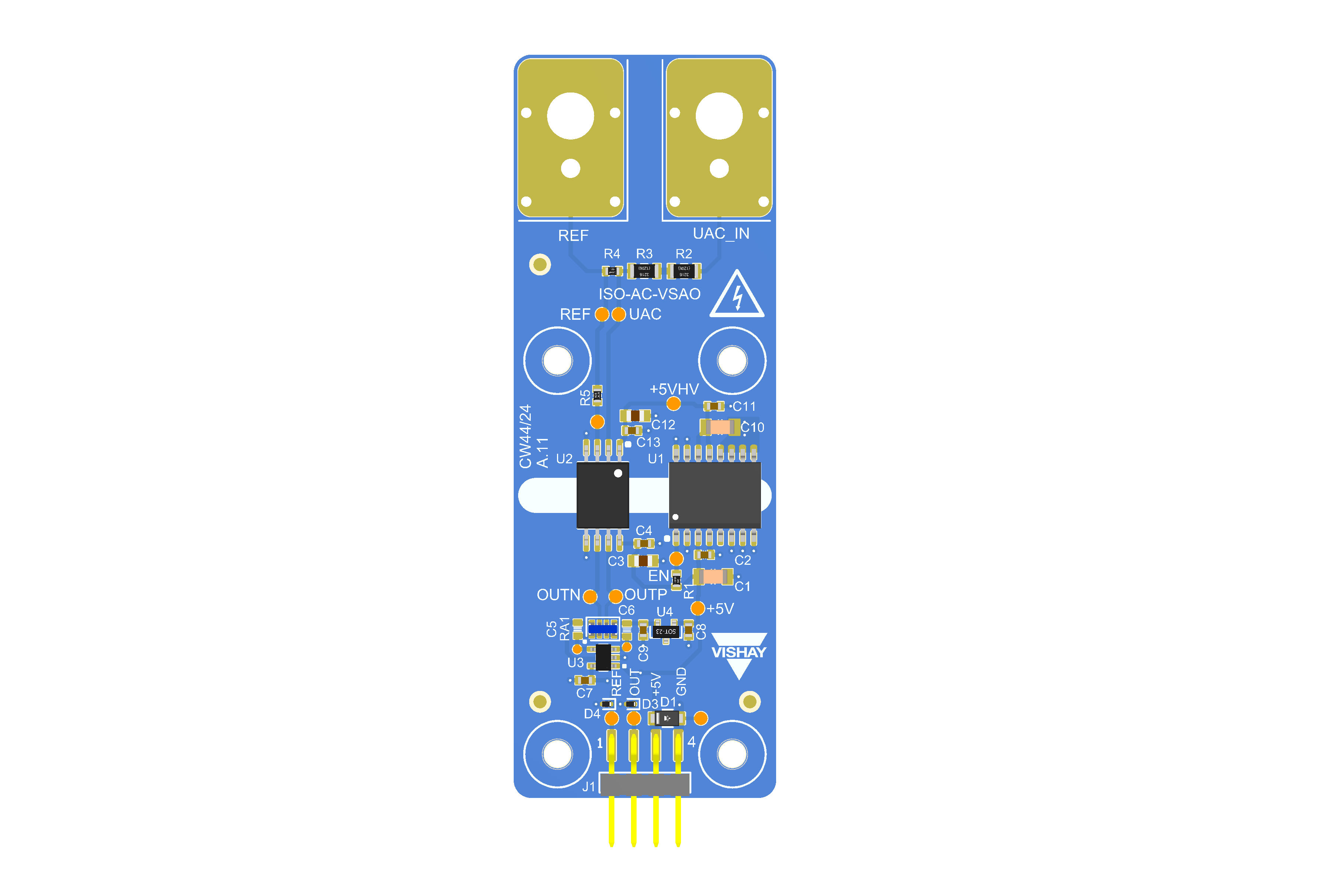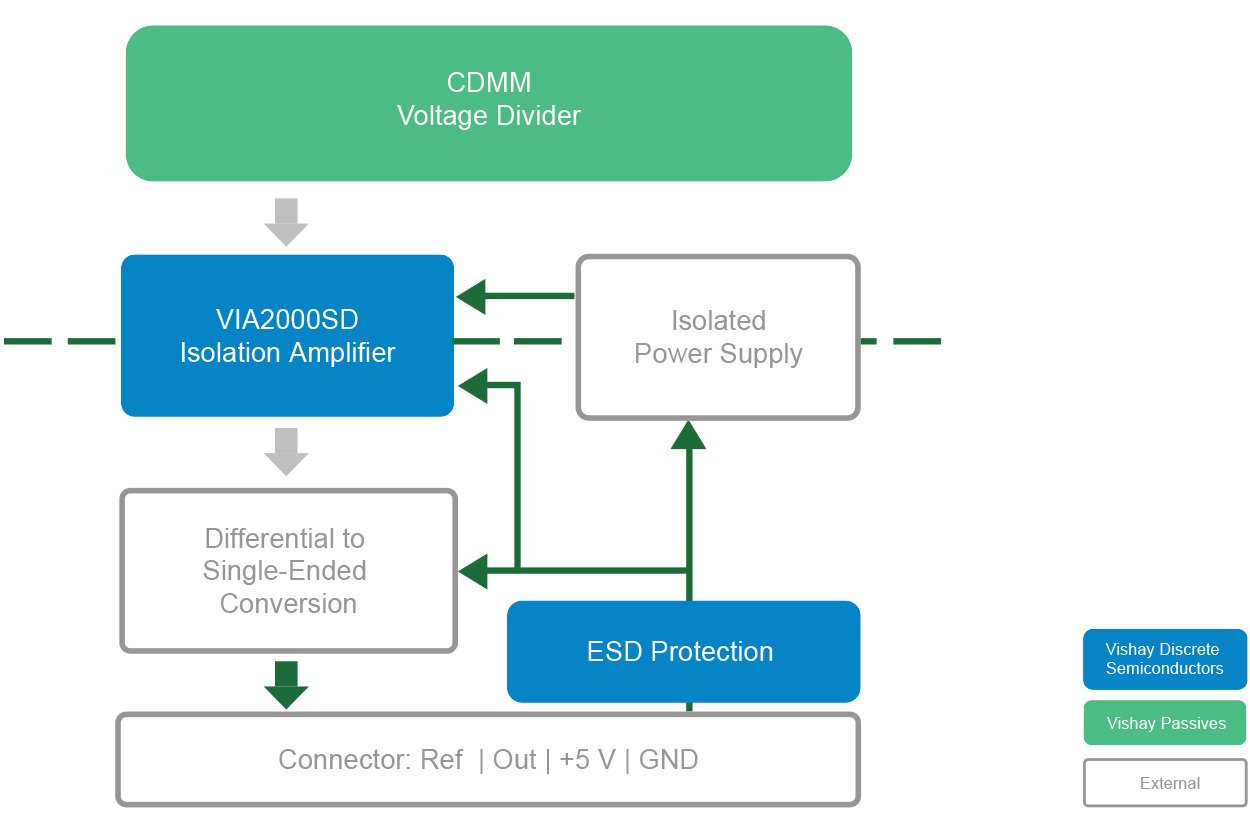This application is based on the VIA0250DD isolation amplifier and a voltage divider comprising a set of TNPV resistors. The high voltage input (UAC to REF) is scaled down to UAC to REF using a set of TNPV resistors. This reduced voltage is then fed into the VIA0250DD isolation amplifier, which produces an isolated, amplified analog signal at its output (OUT to OUT).
The differential output signal, with a common-mode voltage of 1.44 V, is accessible via pin headers labeled OUT and OUT, allowing users to connect a differential ADC or use it for other prototyping needs. This differential output is converted to a single-ended output, providing an output in the range from 0 V to 2.5 V (OUT to GND), which is ready to be interfaced by a single-ended ADC or multimeter.
To allow for the lowest possible thermal drift, the differential to single-ended conversion stage is based on the ACAS resistor network, providing well-matched resistance values over a wide range of temperatures.
This application is based on the VIA0250DD isolation amplifier and a voltage divider comprising a set of TNPV resistors. The high voltage input (UAC to REF) is scaled down to UAC to REF using a set of TNPV resistors. This reduced voltage is then fed into the VIA0250DD isolation amplifier, which produces an isolated, amplified analog signal at its output (OUT to OUT).
The differential output signal, with a common-mode voltage of 1.44 V, is accessible via pin headers labeled OUT and OUT, allowing users to connect a differential ADC or use it for other prototyping needs. This differential output is converted to a single-ended output, providing an output in the range from 0 V to 2.5 V (OUT to GND), which is ready to be interfaced by a single-ended ADC or multimeter.
To allow for the lowest possible thermal drift, the differential to single-ended conversion stage is based on the ACAS resistor network, providing well-matched resistance values over a wide range of temperatures.






















